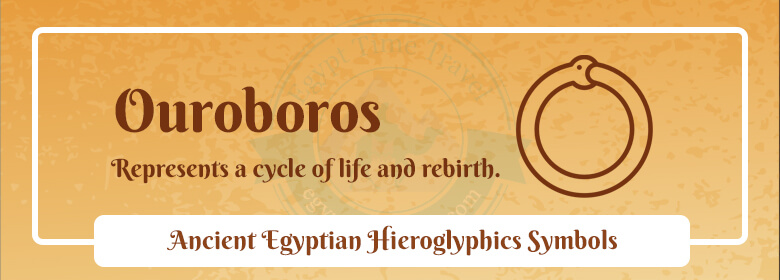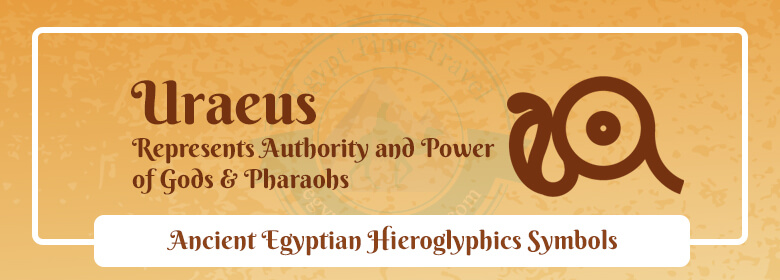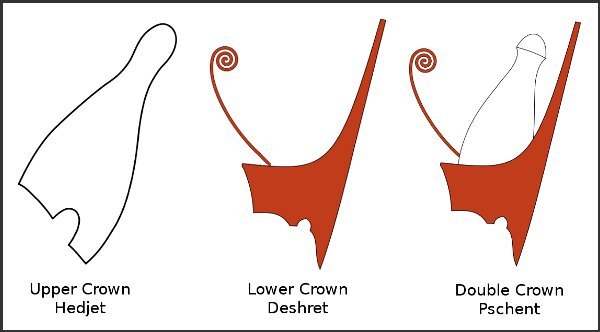Learning about the ancient Egyptian culture is all about understanding the importance of their divine pantheon, as well as their traditions. While it might not be easy for those who are just getting started, there are a few guides to help give you a general idea of ancient Egyptian culture.
For example, if you want an easier means of understanding what certain things meant to them, it’s a good idea to research various ancient Egyptian symbols and their meanings. Not only is it a curious look into ancient Egyptian culture, but it also sheds light on certain aspects of their lives. If you want to learn more about how the ancient Egyptians lived, here are the top Egyptian symbols—and their meanings explained.
The Eye of Horus

Horus is said to have the sun and the moon as his right and left eyes respectively. The Eye of Horus is a symbol of the moon, and it’s meant to be a symbol of protection. While Horus is seen as a god of war, the symbols of Horus are also seen as a protection from wars and disease.
The story behind the Eye of Horus as a means of healing came from the story of Horus and Seth. In a battle over their father, Seth injures the left eye of Horus. Toth (another god) was able to use magic to heal the eye of Horus, though Seth then used the eye to bring their father, Osiris back to life. Such is the reason why most stories involving the Eye of Horus involves protection and healing.
The Eye of Ra

Interestingly enough, while the symbol is called the eye of Ra—and Ra is the sun god—it can also be called the eye of Horus. As stated above, Horus is said to have the sun and the moon as his eyes. If one eye is meant to symbolize the moon, it’s only natural that the eye of Ra symbolizes the sun. However, that’s where any concrete understanding of the symbol ends.
While we all know that the Eye of Ra symbolizes the sun, we don’t know how the symbol was used, at least compared to something like the Eye of Horus. Considering that the Eye of Ra represents the sun, it could simply be a symbol for the sun and the light and life it provides.
The Scarab

Most people who have experienced ancient Egypt in pop culture are likely already aware of the symbol of the scarab. In many cases, the scarab is made out of gems and gold, and is generally a beautiful sculpture. However, did you know that the symbol of the scarab comes from the dung beetle? It seems so odd that something so resplendent can come from a dung beetle, but the ancient Egyptians thought highly of the little bug.
They believed that the dung beetle rolling their ball of dung represented the creation and transformation of the world. They believed that the dung beetles would create life out of nothing, which was what the scarab symbol was all about. The scarab represents transformation and recreation.
The Djed Pillar

The Djed Pillar is often called the Backbone of Osiris, who is the god of death and resurrection, and is one of the most important gods in the Egyptian pantheon. Truth be told, the symbol of the Djed Pillar got its start as a symbol for the god Ptah, known to be the god of creation. Both gods represent resurrection and death in one way or another.
No matter which god was behind the symbol, it doesn’t change what the Djed Pillar presented—stability and strength of will. The fact that it was called the Backbone of Osiris helped to reinforce the symbol as a pillar of strength that the ancient Egyptians could use to help for motivation. Life wasn’t easy in the time of ancient Egypt, and the Djed Pillar was a symbol of their capability of thriving no matter the situation.
The Ankh

One of the most important symbols of ancient Egypt, the Ankh symbolizes what the civilization held most dear. The great pharaohs of the past believed in immortality through the afterlife—that life after death would be quite similar to what they experienced on earth. It’s the reason why ancient Egyptian burial chambers are so ornate, and why the great pyramids were built to house the dead pharaohs.
The Ankh symbolizes immortality, and the grandeur of life. It comes as no surprise that the Ankh was seen as the key of the Nile, as all life in Egypt was only possible due to the Nile. The Nile River gave the early Egyptians all the opportunities they needed to grow.
Ouroboros

If the Ankh was known for symbolizing the grandeur of life and immortality, Ouroboros represents the cycle of death and rebirth. It represents the eternal cycle, and is a symbol that many of us can relate to in the modern age. Even as far back as the ancient Egyptians, people were already well aware of the cycle of death and rebirth, as it represents humanity as a whole.
The very first god in the pantheon, Atum, sprang from the primordial Nun, represented as a serpent eating its tail. Those who know the history and culture of the Greeks will also find Ouroboros as a part of their symbol and culture, as the Greeks were the ones to name the symbol. That said, it still represents the ancient Egyptian concepts of death and rebirth.
Amenta

The interesting thing about this symbol is how it represents both the land of the living and the dead. Amenta is known as the earthly world, which naturally relates to the land of the living. There was a time when Amenta represented the horizon, specifically the point of the sunset.
However, as time went on Amenta began to symbolize the area west of the Nile, where the ancient Egyptians would go to inter their dead. Such is the reason why Amenta symbolizes both the land of the living and the dead. It’s the earthly and material realm, though as the years went on Amenta started to symbolize the underworld.
The Uraeus

Another one of the most crucial symbols of ancient Egyptian culture is known as the Uraeus, which symbolizes the authority of both the pharaohs and the gods. Unlike many civilizations, the gods and goddesses of ancient Egypt are synonymous with their rulers. When a pharaoh dies, it’s said that they take their place on the throne as a god ruling over the Egyptians. It effectively makes the rulers of Egypt living deities, which was why their burial chambers were so ornate.
The symbol of Uraeus could be worn as an amulet to protect the wearer from harm. While it represents the authority of both the pharaohs and the gods, it also represents gods and goddesses as a whole.
Deshret and Hedjet

With these two symbols we have Deshret, known as the Red Crown of Egypt, and Hedjet, known as the White Crown. These symbols represent the kingdoms of Upper and Lower Egypt. The former includes the territories of the goddess Wadjet, while the latter are the territories of Hedjet.
There was a time when the upper and lower kingdoms of Egypt were constantly at each other’s throats, and the two symbols represented the crowns of their kingdom. That said, while the ancient Egyptians would often squabble, it was only a matter of time before they were united under a single banner. Upper and Lower Egypt would experience unification, and the two symbols would eventually be merged under a single crown.
Pschent

As stated above, it was only a matter of time before Upper and Lower Egypt would end up unifying under a single banner. The symbol of Pschent symbolizes a unified Egypt, and—when you consider the size of the country—it can be a little baffling to consider that such a place could be unified, especially back then. During the time of the Greeks and the Romans, the ancient Egyptians constantly suffered through conquerors and liberators alike, and Egypt never recovered from the Hellenistic Period.
That said, Pschent represents a world superpower, a unified Egypt in all of its glory. During its peak, the Egyptians were a force to be reckoned with, and a unified Egypt had near-unparalleled military might.